Toughie. Soviet arsenal against the German "Tiger"
Kubinka receives guests
In January 1943, the Wehrmacht was unlucky: the Germans lost several of the newest tanks "Tiger". And not only lost, but given to the Red Army as a trophy. Guderian, in his manner, accused Hitler of this. In the book Memoirs of a Soldier, he comments on the loss of the Tigers near Leningrad:
The 502nd heavy tank battalion was operating near Leningrad at that time. By the end of January 1943, he had irrevocably lost six Tiger tanks. This list included a tank with tower number 100, which the crew left the Red Army soldiers in perfect working order. It happened on January 18, near the Workers' Village No. 5 of the Leningrad Region. The tank crew did not know that the settlement was already occupied by Soviet troops and behaved in its vicinity as at home. And when the caterpillar giant slid off the road, the tankers calmly got out, trying to assess the situation. They were immediately shot at and hastily retreated, leaving the "Tiger" as a trophy. The fugitive crew explained to the command that the tank's engine had failed. Soviet tank crews pulled the heavyweight out of the snow captivity, brought in and drove him to the Polyana railway station. Eyewitnesses claim that the Germans from the Sinyavinsky Heights continuously and unsuccessfully fired at the lost car. Soviet engineers examined the "Tiger" in Kubinka, and after that, from June 22, 1943, it was exhibited at a trophy exhibition in Moscow at the Gorky Central Park of Culture and Leisure. The car then returned to Kubinka, and in 1947 it went for scrap, since a lot of it came out of the 56-ton tank.
But tank number 100 was not the only tank captured by the Soviet Union. In the area of the same mentioned Workers' settlement No. 5, the Germans abandoned another "Tiger" with tower number 121, which was really out of order. This car was destined to be shot at the Scientific and Testing Armored Range of the GBTU of the Red Army. After the execution, the tank was sent to the summer exhibition of captured equipment in Moscow, and then disposed of. Historian Yuri Pasholok claims that a third tank was also evacuated from the battlefield. It was in a deplorable state and was used as a donor of spare parts and armor samples for study at TsNII-48.
Based on the results of the study of the first tank No. 100 and other trophies in the "Bulletin of Tank Industry" at the Test Site, very interesting conclusions were drawn. German tank builders, in particular, were accused of plagiarism. The control mechanism of the "Tiger" was stolen from the French "Somua", and the viewing prisms - from the Americans. Among the minuses, they also identified the imbalance of the turret with a cannon extended forward and a heavy mask, which seriously impeded the manual turret rotation with a roll of 5 degrees. "Tiger" was taken prisoner in the heyday of the technological power of the Third Reich, as evidenced by the composition of chromium-molybdenum armor: carbon - 0,46%, silicon - 0,2-0,3%, phosphorus - 0,02-0,03%, nickel - 0,1-0,15%, manganese - 0,66-0,8%, sulfur - 0,014-0,025%, chromium - 2,4-2,5% and molybdenum - 0,45-0,50% ... Brinell hardness 241-302 - medium hardness armor. Everything related to weapons was especially positive in "Tiger". Soviet engineers identified a unitary ammunition that increased the rate of fire, an electric trigger for the gunner that improved accuracy and a binocular sight, which was generally the best in the world at that time.
The visibility from the tank was assessed separately. Out of sight of the "Tiger" were: 6 meters for the driver, 9 meters through the mirror observation device, 11 meters through the slots in the tower and 16 meters through 6 slots in the commander's cupola. According to the testers, the design of the Tiger's viewing devices ensured the observer's safety and a satisfactory view. The Maybach HL210 Tiger engine was also successful, according to the Kubinka engineers. Compared to its predecessor HL-120, the new engine has managed to significantly increase the liter power. For this, the compression ratio was increased to 7,5, which created problems with working on 74th gasoline. In turn, internal cooling of parts with sodium was used to reduce the increased load on the valves from detonation. Further, the combustion chamber filling ratio was increased in the engine, for which the diameter of the intake valve head was increased to 0,6 of the cylinder diameter, and the valve head itself was given a well-streamlined tulip shape. Every three cylinders of the engine had two twin carburetors, which is also of great importance in increasing power. The record speed for the engine class was the piston speed - more than 16 m / s.
Disassemble to a screw and shoot
The "Tiger" transmission made an indelible impression on Soviet engineers. The Adler gearbox had 8 gears for forward and travel and 4 for reverse. The automatic hydraulic servo made the giant's driving a lot easier. In fact, any member of the crew could replace the driver, it was so easy to drive the "Tiger". To change gears, it was enough to move the lever without squeezing the pedals of the main clutch. The servo drive automatically, without the participation of the driver, turned off the main clutch and the previously engaged gear, synchronized the angular speeds of the gear clutches to be engaged, turned on a new gear, and then smoothly brought the main clutch into action. In this case, in the case of the release of hydraulic equipment, gear shifting and turning off the main clutch can be done mechanically. Limousine, and more! Soviet engineers give this unit a big name for the best drive along with the gearbox itself. At the same time, this mechanism was viewed more as a curiosity and did not fully understand why such a complex technique was installed in a tank. Perhaps the only thing that deserved attention was the jet lubrication system, which supplies oil to the place where the gears engage when the sump is dry.
The turning mechanism of the "Tiger" (the same one that the Germans borrowed from the French "Somua") is of the planetary type. Without going into the complexity of the device, let us dwell on the conclusions reached by domestic engineers.
The steering mechanism, in comparison with the side clutches, reduces the load on the engine and the power loss in the friction elements of the steering mechanism, thanks to which the tank has good steering. The tank can turn with any radius, including the one lying inside its track. The disadvantage was the presence of two degrees of freedom in the transmission, which, when driving in a straight line, reduced the vehicle's cross-country ability on obstacles and in difficult road conditions. Simply put, the "Tiger" independently changed the direction of movement, if there was a heterogeneous ground under the tracks. This deficiency was eliminated on the "King Tiger" - he walked strictly straight, although not far. As a result, Soviet tank builders noted the elegance of the design of the tank turning mechanism, doubted its expediency and decided to leave it as a monument to the Teutonic school of engineering.
Let's move on to the Tiger's chassis. Despite the complexity and massiveness of the staggered arrangement of the skating rinks, the "Bulletin of Tank Industry" indicates that the Germans had no other choice. With a tank mass of 56 tons, only such a scheme made it possible to install the vehicle on external rubber cushioning. In all other schemes, the rubber tire would not withstand gigantic loads.
For car # 121, as mentioned above, a different fate was in store. All equipment was removed from the tank and placed at the Kubinka training ground as a target. Perhaps the tests of the armor protection of the tank at that time for the Red Army were much more important than the nuances of the design. Based on the results of the firing range in May 1943, a report was released, which describes in great detail the strengths and weaknesses of the new German tank. The military took the "tiger" threat so seriously that they even brought in two aircraft for testing, the LaGG-3 and the Il-2, which fired a 37-mm cannon on the tank. Winged machines shot at the roof of the Tiger, diving at an angle of 35-40 ° from a distance of more than 500 meters. The range of means of destruction included grenades, mines (anti-tracked TMD-B and experimental jumping mine of plant # 627), five anti-tank guns, three anti-tank guns, four tank guns, two anti-aircraft guns and four large-caliber field guns. Looking ahead, it is worth mentioning that three of the four field guns of 107 mm, 122 mm and 152 mm calibers missed the target. The 152-mm ML-20 cannon-howitzer hit the target ten times in vain, the M-122 30-mm howitzer fifteen times, and the 107-mm M-60 divisional cannon fired seven rounds past the Tiger, after which it lost the installation of the opener ... The arsenal included both domestic and Lendleigh artillery pieces. Artillery fire began on the "Tiger" on April 25 and ended six days later.
We started with the 45 mm gun of the T-70 tank. The gun pierced the side armor 62 mm thick from 350 meters with a sub-caliber projectile. But this vulnerable point had to be found on the German carcass: usually the shells fell into the 82-mm thickness of the armor (the upper side sheet), leaving only dents. And only from 200 meters, that is, point-blank, the T-70 was able to hit the thick side of the Tiger. The anti-tank 45 mm gun of the 1942 model was also able to hit the tank only on the side and only with a sub-caliber projectile (muzzle velocity 1070 m / s). The bottom sheet of the board made its way from 500 meters, the top - from 350 meters. With a more serious caliber, 57 mm (ZIS-2), they tried to pierce the frontal plates. It turned out to be in vain, but the gun penetrated the sides of the hull and turret from 800-1000 meters. And once the shell successfully hit the commander's cupola, pierced through and ripped from the shoulder strap. For some reason, the British 57-mm cannon was not hit in the forehead of the Tiger, but the shells confidently hit the side from 1000 meters. Soviet testers separately noted the high-quality alloy from which the British made armor-piercing shells. The M-61 armor-piercing tracer shells with a bottom fuse from the American M4A2 tank ammunition were also highly appreciated.
These 75 mm shells did not collapse, even when pierced through the side of a German tank. Only now they punched it from a distance of only 400-650 meters. A real failure with far-reaching consequences was the firing from the 76-mm F-34 cannon: out of 10 shots, not a single scoring defeat. Neither standard armor-piercing shells nor experienced cumulative ammunition coped. At the same time, the steel of the shells was of no use; when it hit the Tiger, the ammunition simply crumbled. And the German armor only bulged (did not break off) on the back of the sheet. The 76-mm K-3 anti-aircraft gun was able to penetrate only the 82-mm side of the tank turret from 0,5 km. Good ones news came with a 52-K 85 mm anti-aircraft gun. This gun confidently penetrated the side of the tank from 1000 meters, head-on from 500 meters. If the M-30 howitzer did not hit the Tiger with its 122-mm projectile, then a similar A-19 cannon with a twenty-five-kilogram projectile not only pierced the German car, but also broke through pieces of armor. Then the idea of installing a miracle weapon on a heavy Soviet tank was born.
Now about light artillery. The KB-30 grenade, which was thrown at the Tiger because of the T-34, did not penetrate the armor even once out of three repetitions. However, if the grenade was leaned against the side armor, then it completely burned through the "Tiger", leaving 20-25-mm holes. The conditions, I must say, are very specific and far from reality. Therefore, a hand grenade could only be used against the roof of a tank, where the armor thickness did not exceed 28 mm.
In the next experiment, the German tank was towed by the domestic KV-1 in order to study the nature of the destruction of the TMD-B mine. Everything went well: the caterpillar was torn along with the gear rim of the right drive wheel. Then there was a jumping rifle mine of the factory # 627, which was laid under the bottom of the "Tiger" and was blown up. 28 mm armor was successfully hit with an impressive 27x35 mm hole. The failures of anti-tank rifles of calibers from 14,5 mm to 20 mm were quite expected. But the Blum 43P rifle with an armor-piercing bullet with an initial speed of 1500 m / s penetrated the lower side plate of the tank from 100 meters. It was only necessary in combat conditions to be able to hit the "Tiger" like weapons. Finally, aviation... For flying equipment, the German heavyweight was not a difficult target: the 37-mm cannon successfully pierced the thin roof of the tank from a distance of half a kilometer.
Having turned out to be a tough nut to crack for domestic tanks and artillery, the Tiger (one of the few) initiated large-scale changes in Soviet tank building, which eventually became part of the Great Victory.
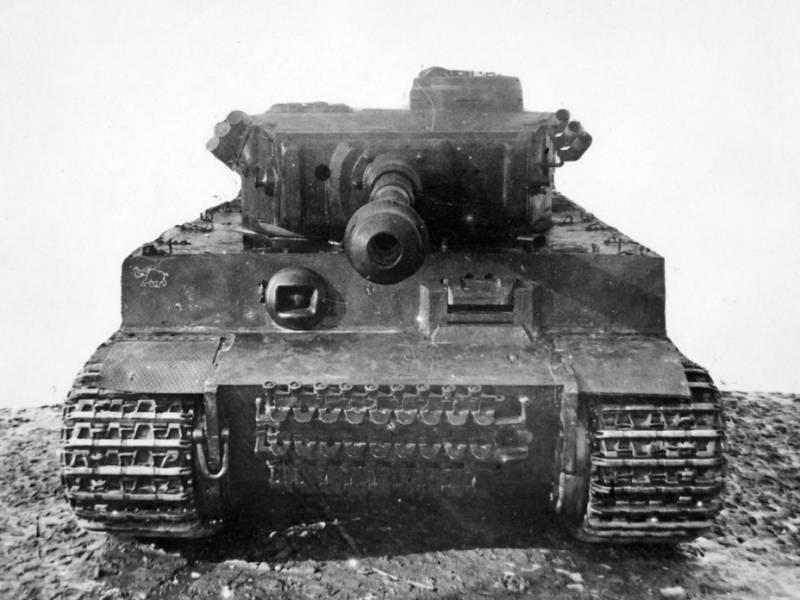
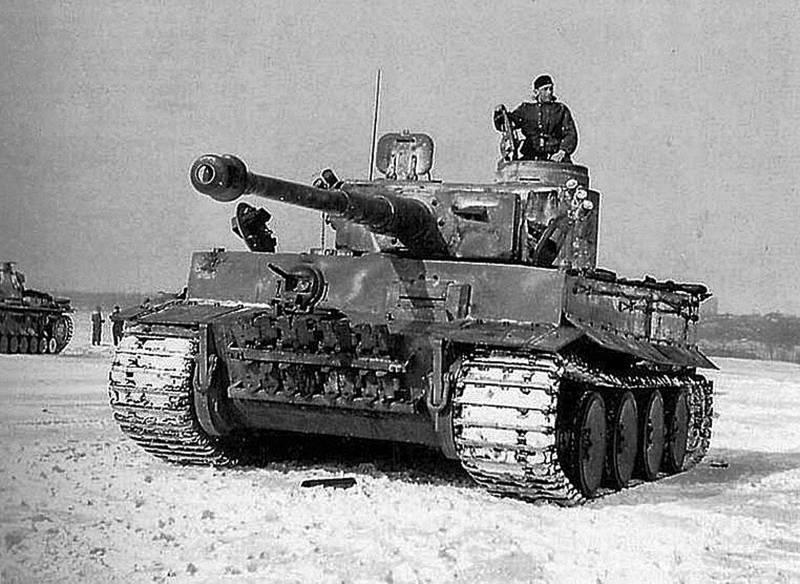
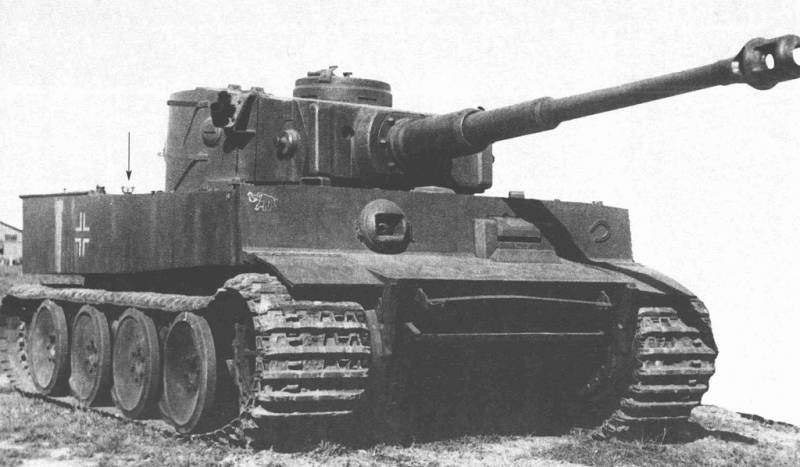
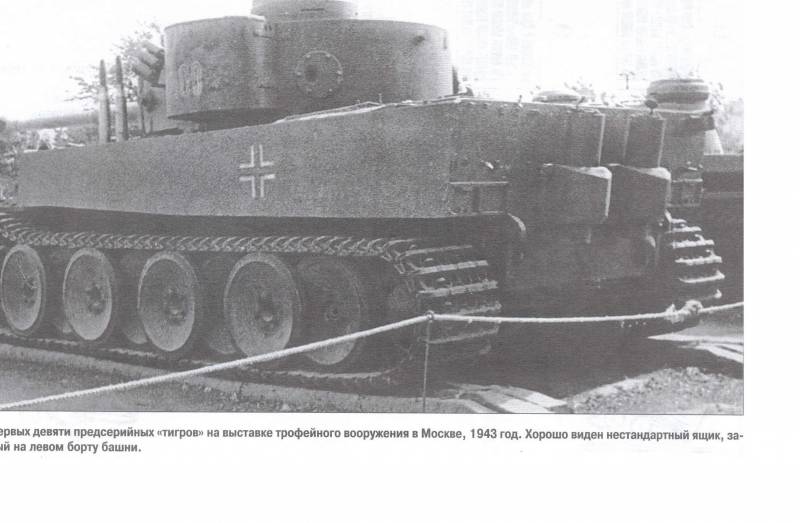
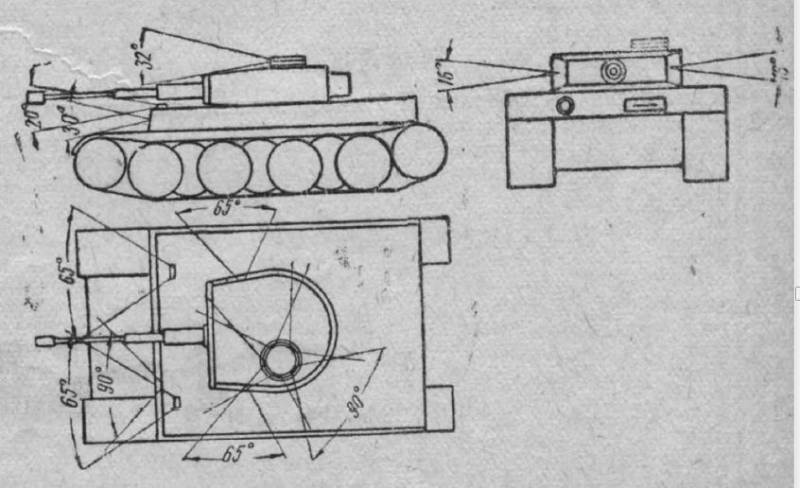
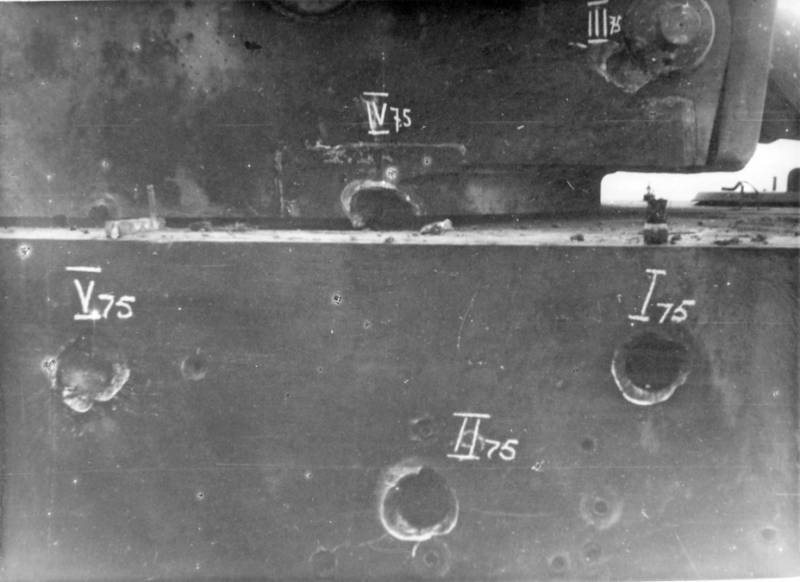
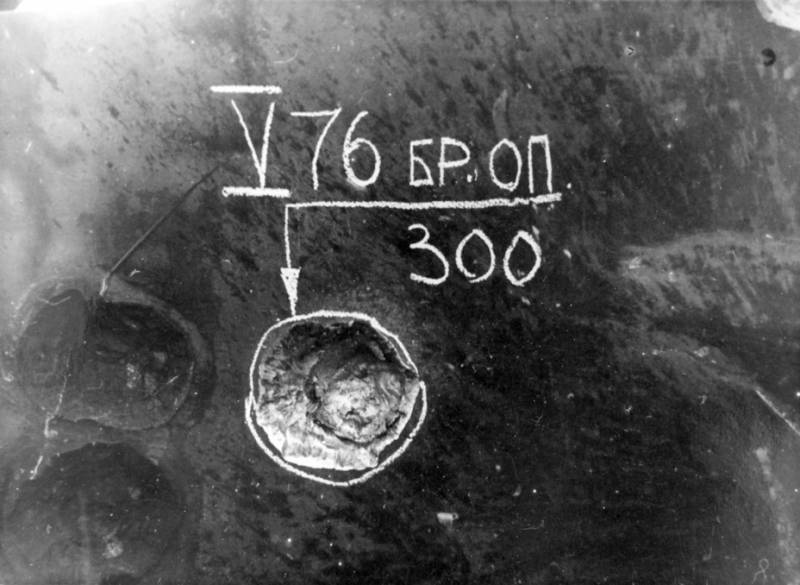
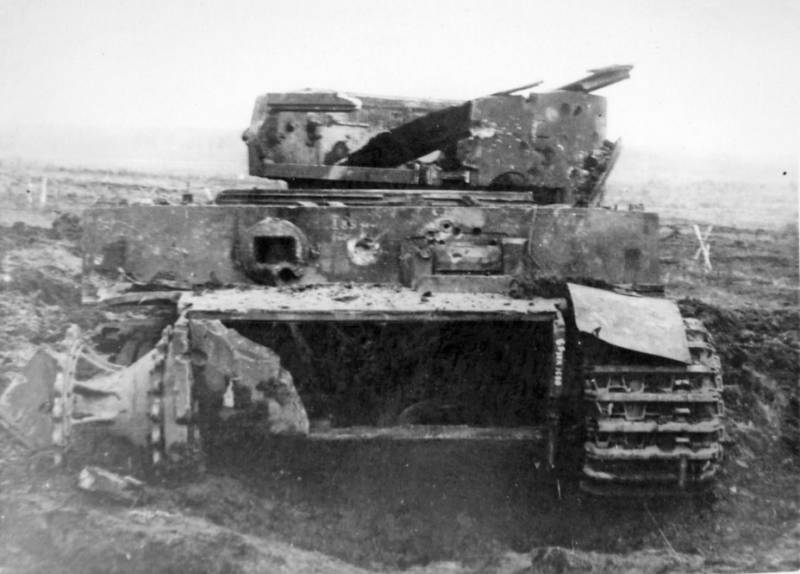
Information